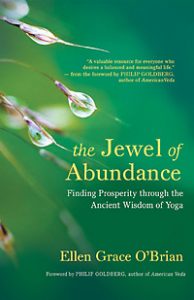Time is a commodity. It’s been compared with money. We only have so much of it in this lifetime, so time is precious. And how we spend our time says a lot about what is important to us. Recently I’ve had a big change in where I’ve been finding my time spent – and it has surprised me, in many wonderful ways.
I’ve done the career thing, a couple of times over in a couple of different incarnations. And I’ve done the mom thing — wholeheartedly: from carpools and karate, to homework and heartache and everything in between. And all along the way I’ve been involved with some kind of service. But it was always secondary to the job, or the kids, because there is only so much time to go around, especially for a working mom.
When my boys left for college I found myself with time on my hands. This is something that hasn’t happened since I gave birth. Yes, I’ve still got work, but a person can only sit in front of a computer for so many hours a day without going crazy! I decided to volunteer at a group foster home.
The process for this is quite extensive. I had to go through security clearance, including fingerprinting and a TB test. And I also had to go through training. It took a couple of months for all the paperwork to go through, but now I’m officially a volunteer. And I love it!
In the past, when I’ve volunteered it was all about making gift baskets for silent auctions, going to lunch meetings, and selling raffle tickets to raise money for the organization. I wanted to contribute in a different way, to actually work with the kids. In one of my work incarnations I was a modeling school teacher, so I have experience working with teen girls. This population is the most “at-risk” in the foster care world and I felt it was a place where I could make some sort of a difference. At this particular foster home, there are 14 teen girls who live on campus.
A group foster home is often the last stop for kids. At this point they have nowhere else to go. Most of them are there through no fault of their own. If they have parents, their parents are abusive, addicted to drugs, or in jail. Or they are simply unable to cope with the difficulties that their child is going through. Most of the kids are SED, or severely emotionally disturbed. This foster home has family outreach, and things like parenting classes, with the goal of bringing the family back together again. But the reality is that just about 3% of the kids who arrive at group homes eventually return to a healthy family situation.
I waltzed in to the girls cottage thinking this was going to be fun, that the girls would be happy to see me, and that we’d have tea parties and book clubs. I quickly learned to not have any expectations, or any particular plans, and to just be present for whatever needs they had at the moment. One of the staff members told me that these kids are like porcupines. They are withdrawn, and suspicious, and have their spikes up to protect themselves. You need to approach cautiously, and gently. And when a porcupine throws out a spike, you can’t be surprised, or angry, because it’s just the nature of the animal. With everything these kids have been through in their young lives, it is completely understandable for them to be on guard.
Where we started to bond was in the kitchen. These girls need their spirits to be fed, and sometimes the best way to do that is by starting with their stomachs. Group homes aren’t known for their gourmet cuisine, and the weekend dinners are the most dreaded of all the meals. By cooking together, good wholesome meals with lots of fresh vegetables, we were able to fill up the cottage with yummy smells that made the place feel much more like a home than an institution. While cooking we can talk amongst the activity, so there are no awkward pauses. And we have a mutual goal that we accomplish together, something tangible to both serve and enjoy in a delicious meal.
I’ve been going up there every Sunday to make dinner with the girls. And I find that during the week, I miss them, so I’m up there at least a couple of times in the afternoons just to hang out, help them with their projects, and generally be available. I’ve given them books, and DVDs, and I bring fresh fruit for after school snacks. But what they really appreciate, more than anything, is my time. It’s just the being there that really makes a difference. And as time goes on, I’m discovering that more and more, this is where I am choosing to spend my time. Vedic philosophy says that the three most important things we can give our children are attention, affection, and time. The children in the foster care system are starved for all three. And this is something that any of us can provide without spending a dime.
As I learn more about how everything works with foster care, I’m finding more ways that those of us who want to help can really make a difference.
Right now there are more than 780,000 children in the United States who are in the foster care system because they are unable to live safely at home. Most of these children are there through no fault of their own, but because their parents can’t, or won’t, take care of them. The children often have difficulty trusting people, and making lasting relationships because so many strangers come in and out of their lives: police officers, lawyers, judges, therapists, social workers, and foster parents. If they are placed in a group home, there is also several different staff throughout the week to watch over the kids. They can be moved from home to home, and school to school, with little or no notice. It can be daunting, and even scary for a child.
Thankfully, there is a volunteer organization called CASA: Court Appointed Special Advocates for Children. CASA volunteers are appointed by judges to look out for specific children in the overburdened legal and social service system. These volunteers make sure that the children’s needs are being met, that they aren’t getting lost in the system, or languishing in a group or foster home that is not appropriate for them. The CASA stays with the child until the case is closed, and the child is placed in a safe, permanent home. Because foster kids move around so much, many times the CASA volunteer is the one constant adult presence, the one adult they can count on to care for them, and advocate for them. The CASA volunteer really gives the child a voice, by speaking on the child’s behalf in the courtroom and in team meetings so that the needs of the child are addressed and met.
If you have some time to spend, and you want to make a lifelong difference for a child who really needs your help, consider volunteering in a foster home. Or even better, consider becoming a CASA. Last year, more than 68,000 CASA volunteers served more than 240,000 abused and neglected children through 1,018 program offices. CASA volunteers have helped more than two million children since the program was established in 1977. Currently there are not enough CASA volunteers to go around. Statistics show that children with a CASA volunteer are far more likely to find the services and resources they need and go on to lead successful and productive lives. Now can’t we all consider that to be time well spent?
For more information, visit the CASA website: nationalcasa.org










 An excerpt from The Jewel of Abundance by Ellen Grace O’Brian
An excerpt from The Jewel of Abundance by Ellen Grace O’Brian Ellen Grace O’Brian is the author of
Ellen Grace O’Brian is the author of  An excerpt from Step into Your Moxie by Alexia Vernon
An excerpt from Step into Your Moxie by Alexia Vernon Alexia Vernon is the author of Step into Your Moxie. Branded a “Moxie Maven” by President Obama’s White House Office of Public Engagement, she is a sought-after speaking and leadership coach who delivers transformational keynotes and corporate trainings for Fortune 500 companies and other professional groups and organizations, including the United Nations and TEDx. Visit her online at
Alexia Vernon is the author of Step into Your Moxie. Branded a “Moxie Maven” by President Obama’s White House Office of Public Engagement, she is a sought-after speaking and leadership coach who delivers transformational keynotes and corporate trainings for Fortune 500 companies and other professional groups and organizations, including the United Nations and TEDx. Visit her online at